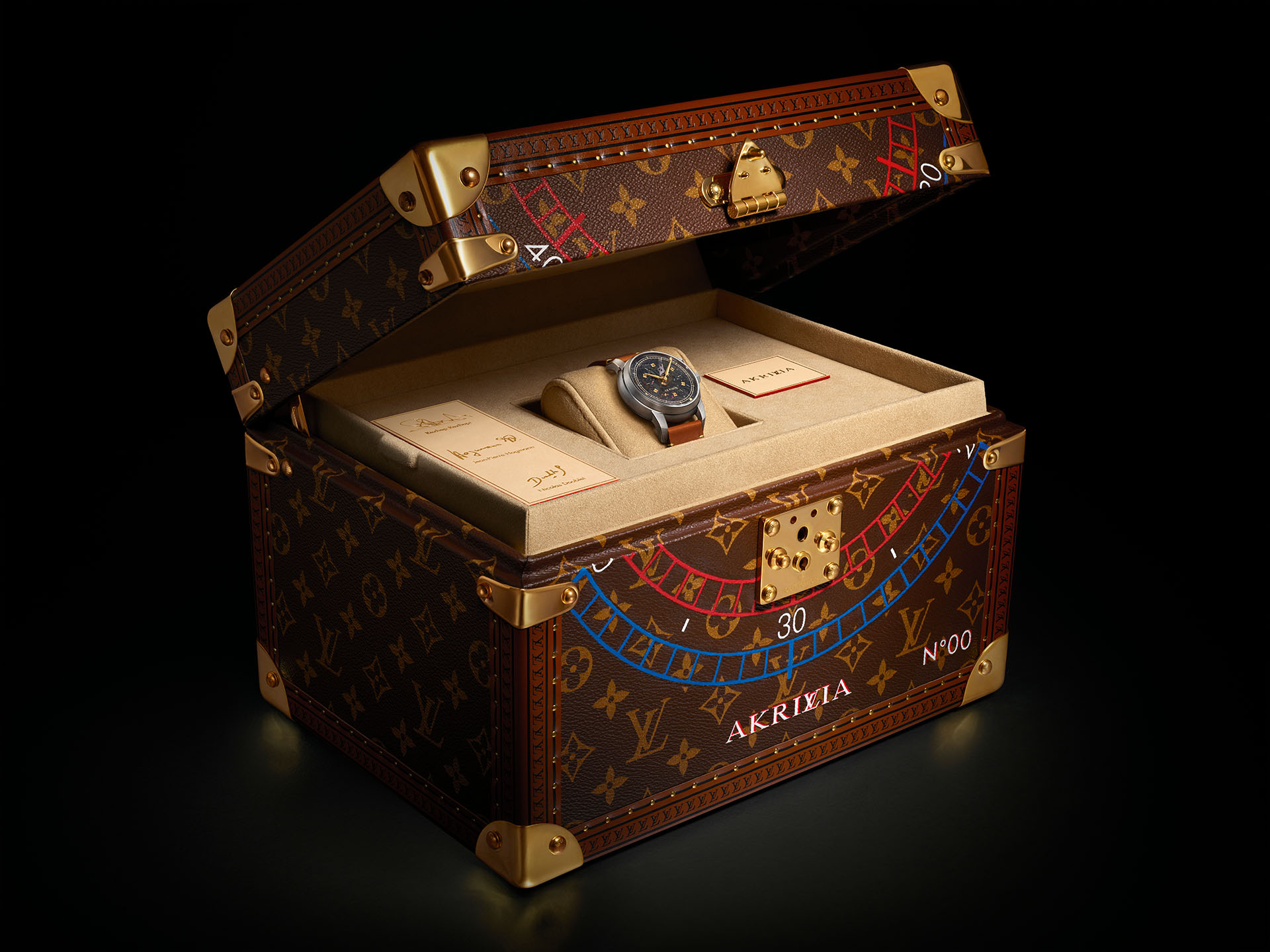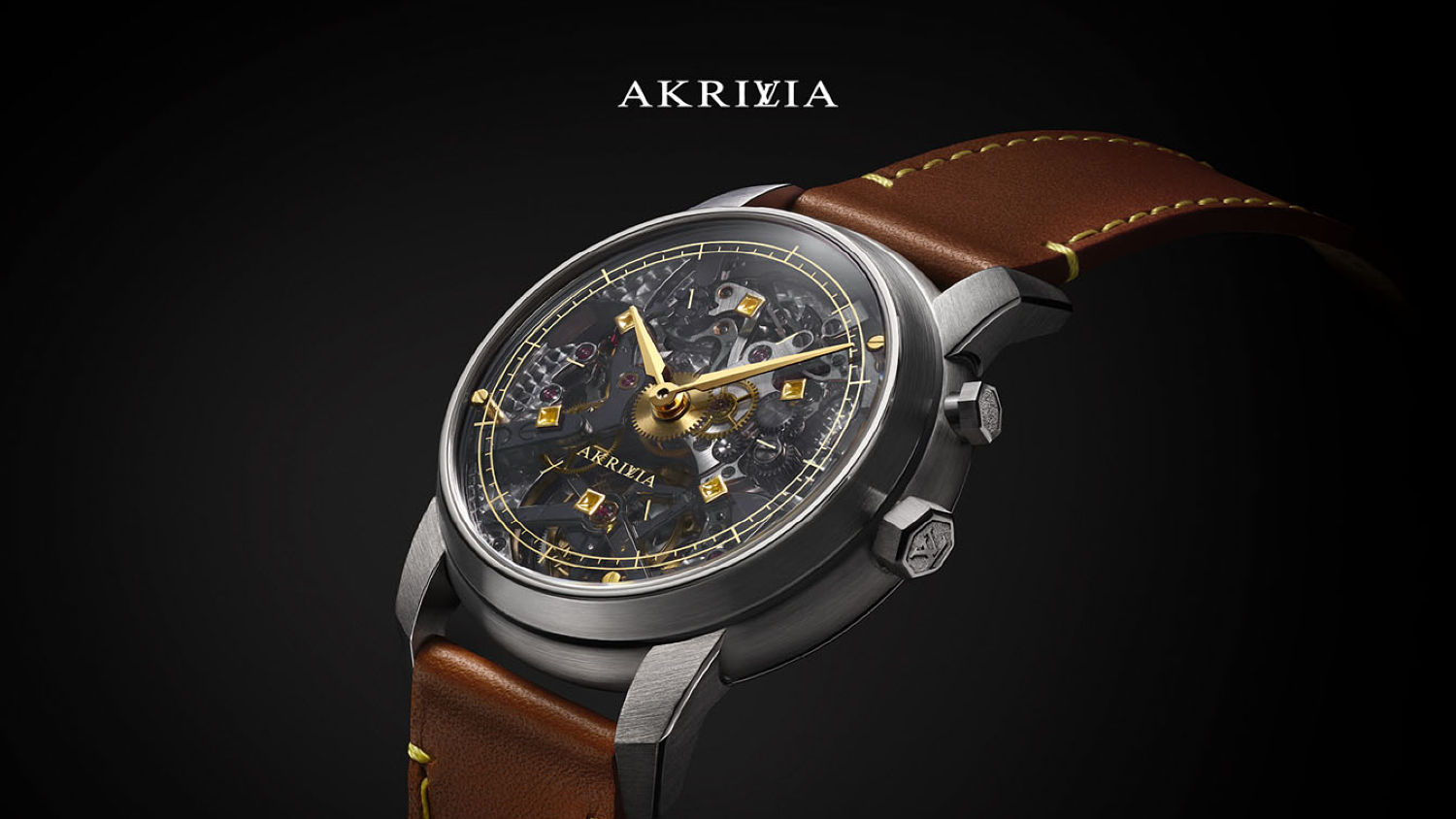It was in the press room at Dubai Watch Week 2023 where I sat down with the founder of Atelier Akrivia, 36-year-old Rexhep Rexhepi, for close to half an hour, and at the end of which, I left the room feeling inspired. Rexhepi is after all a watchmaking wunderkind who started his journey in the industry when he was just 15, and went on to work with hallowed names like Patek Philippe and F.P. Journe, before he established his own independent brand Atelier Akrivia in 2012. This year, one of the things that brought Atelier Akrivia and Rexhep Rexhepi into a greater spotlight was the collaboration with Louis Vuitton. Its result, the LVRR-01 Chronographe à Sonnerie, is a watch that exudes the quintessence of both ateliers with a unique chronograph tourbillon movement developed by Rexhepi inside the Louis Vuitton signature Tambour case.
The collaboration is striking for several reasons. The first is that Louis Vuitton’s watch department, under the leadership of Jean Arnault, is set to collaborate and support renowned independent watchmakers over a five-year programme—it inaugurated this initiative with Atelier Akrivia and the LVRR-01 Chronographe à Sonnerie. It is also the first watchmaking collaboration that Louis Vuitton has ever done with another watchmaker. Lastly, this timepiece is the world’s first chiming chronograph.
The LVRR-01 Chronographe à Sonnerie (the first part is an acronym for Louis Vuitton, Rexhep Rexhepi, number one) is a 39.5mm, platinum, dual-sided watch with a smoked translucent sapphire crystal dial giving a view of the inverted movement, and thus the chiming and chronograph function. The union between the two brands can be seen in the logo on the dial, where ‘LV’ comes alive amidst ‘AKRIVIA’. This is also the first time the renowned Parisian luxury house has combined its logo with someone else’s. On the flip side is a glossy white grand feu enamel displaying the chronograph function and bearing the names ‘LOUIS VUITTON’ and ‘REXHEP REXHEPI’. Hand engraved on this side of the case are also the words ‘Louis cruises with Rexhep’, further affirming the synergy between the two ateliers.
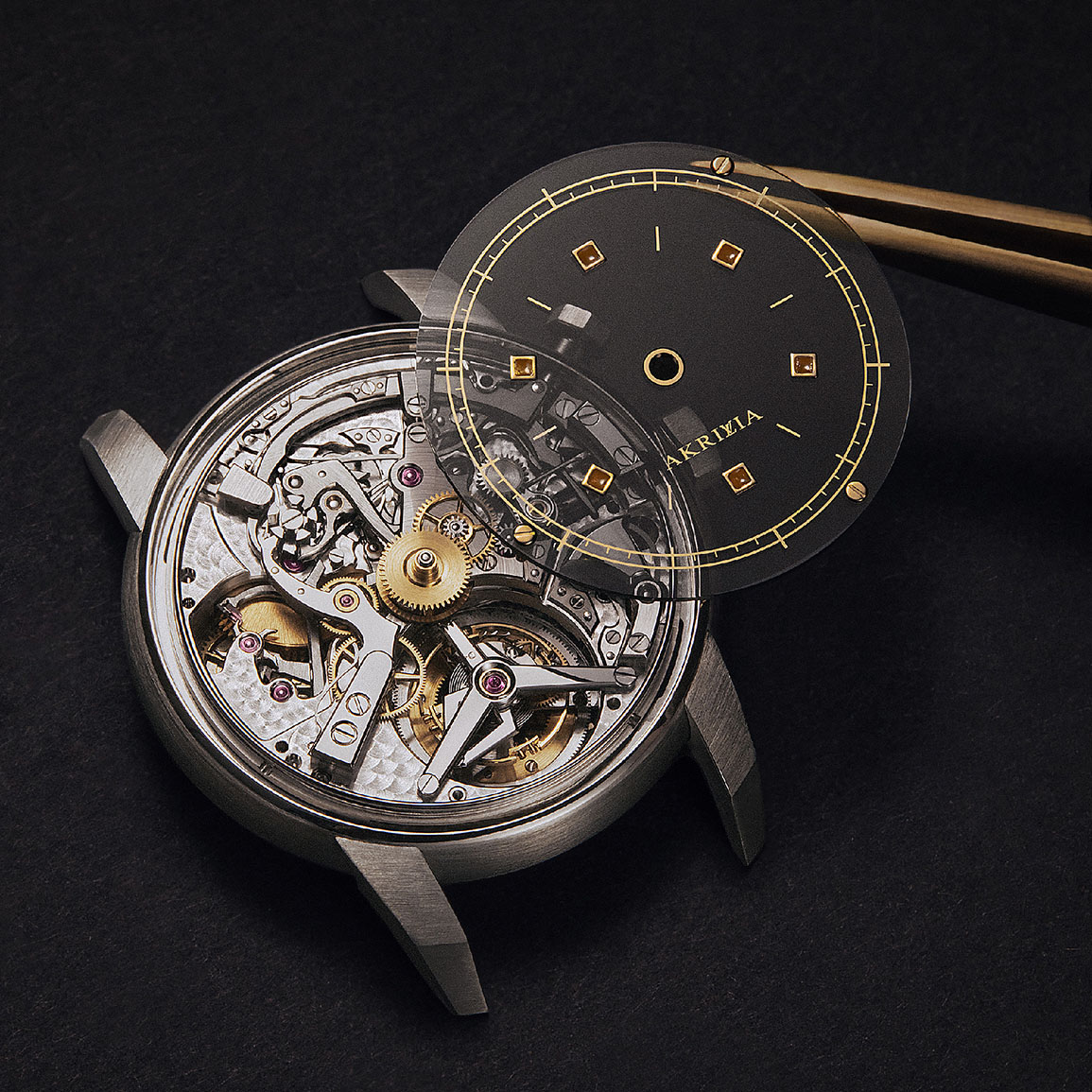 The tinted sapphire crystal revealing the inverted movement
The tinted sapphire crystal revealing the inverted movement
In line with the codes of haute horlogerie, there is a tourbillon at 6 o’clock on the front side that completes one full revolution every five minutes, unlike most tourbillons that revolve fully every one minute. The balance wheel inside this tourbillon takes cues from marine chronometers, with its two broad arms and eight inertial regulating weights. The sapphire dial features a 3N gold railway minute track that is reminiscent of the first watch in Rexhepi’s collection, Chronomètre Contemporain, signed as Rexhep Rexhepi. There are six gold cubes filled with translucent fired enamel through a technique known as plique-à-jour—this detail takes cues from one of Louis Vuitton’s patented complications, the Spin Time jumping-hours display. The gilt details also take inspiration from the yellow stitching that is found in Louis Vuitton’s leather products.
The white grand feu enamel dial at the back is crafted on a palladium-gold base. It was designed by Rexhepi and brought to life by Nicolas Doublel, the in-house enameller at La Fabrique du Temps, Louis Vuitton’s timepiece manufacture in Geneva. The dial reminds one of the chronograph pocket watches from the 19th century with twin scales in blue and red for the hours and minutes respectively; it is also reminiscent of the first-ever Louis Vuitton wristwatch from 1988, the Monterey I.
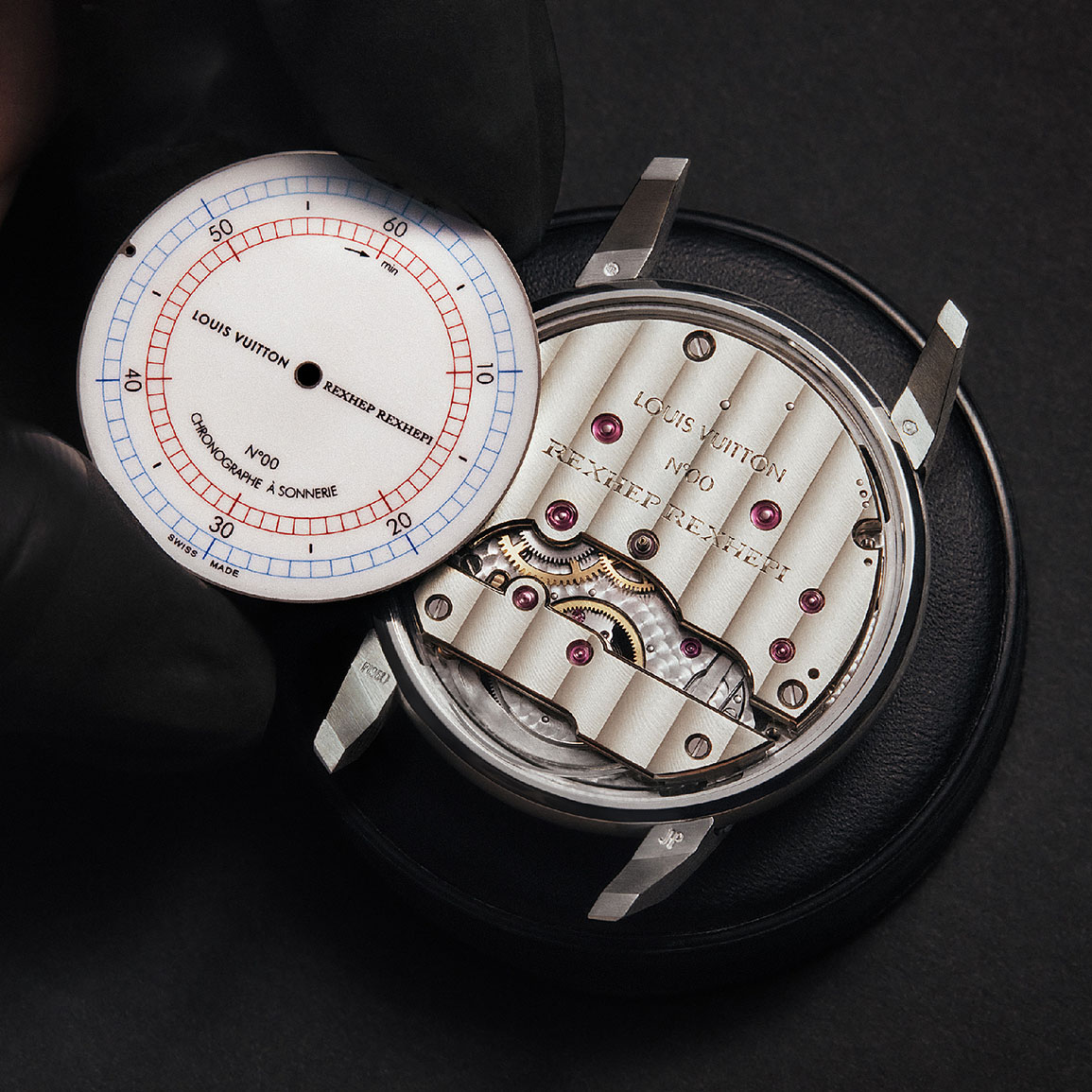 The Grand-Feu enamel dial on the chronograph side
The Grand-Feu enamel dial on the chronograph side
Now to its most interesting aspect: The LVRR-01 Chronographe à Sonnerie is the first watch to chime elapsed time with each passing minute—remember, that when activated, the chronograph function is actually out of sight on the dial underneath. To combine a chronograph with sonnerie, Rexhepi designed twin barrels, where one was used for the power source and the other for the chime. However, unconventionally, he linked the second barrel with the gear train, rather than keeping the barrels independent. When the chronograph is activated with the pusher at 2 o’clock, a black-polished steel hammer strikes a tempered steel gong and chimes each minute of elapsed time. The rotation of the second barrel also comes into play, which in turn supplies the energy to the base gear, providing enough energy for both mechanisms to function without creating any hindrance in the movement, the LVRR-01 calibre, a traditional hand-wound movement. Entirely hand-decorated with anglage and black polishing techniques, its power reserve is about 72 hours.
Going further into the design, the chronograph pusher and the crown are seven-sided, as seen in Louis Vuitton watches, and feature hand-hammered decorations, which is a technique used by Rexhep Rexhepi. The signature drum-shaped Tambour case is also redesigned with more streamlined aesthetics as seen in the sloped bezel with sculpted lugs. With a thinness of only 12.22mm, the case is designed under the supervision of master case maker Jean-Pierre Hagmann, who was earlier with Patek Philippe. “When I was at Patek, I had heard of Jean-Pierre Hagmann. In 2014, I contacted him. I had always dreamt of having one case from him. He was retired, but he agreed to come and transmit his passion, his knowledge,” says Rexhepi. “Now I am the only guy [who has learnt from him]. I can be selfish, and say I am the only guy to take this, but I started because I learnt from somebody. So, you also have to be open, to give and share something. We teach another person, and with this transmission, you become better.” The ‘JHP’ seal of quality casemaking can be found on the lower right lug of the watch.
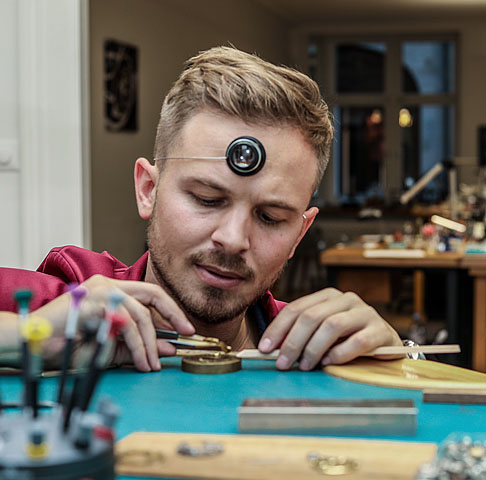 Rexhep Rexhepi
Rexhep Rexhepi
Flanking the case is a natural calfskin leather strap in a shade of brown completed with a platinum ardillon buckle, also made in Jean-Pierre Hagmann’s workshop and bearing the ‘JHP’ hallmark. The watch comes inside the traditional Louis Vuitton trunk, customised for the collaborative timepiece. The chronograph scales of the enamelled dial are hand-painted on the trunk, along with ‘AKRIVIA’ where once again the ‘V’ is paired with the ‘L’ to form the Louis Vuitton logo, and the serial number. The signatures of Rexhep Rexhepi, Jean-Pierre Hagmann, and Nicolas Doublel feature inside the trunk.
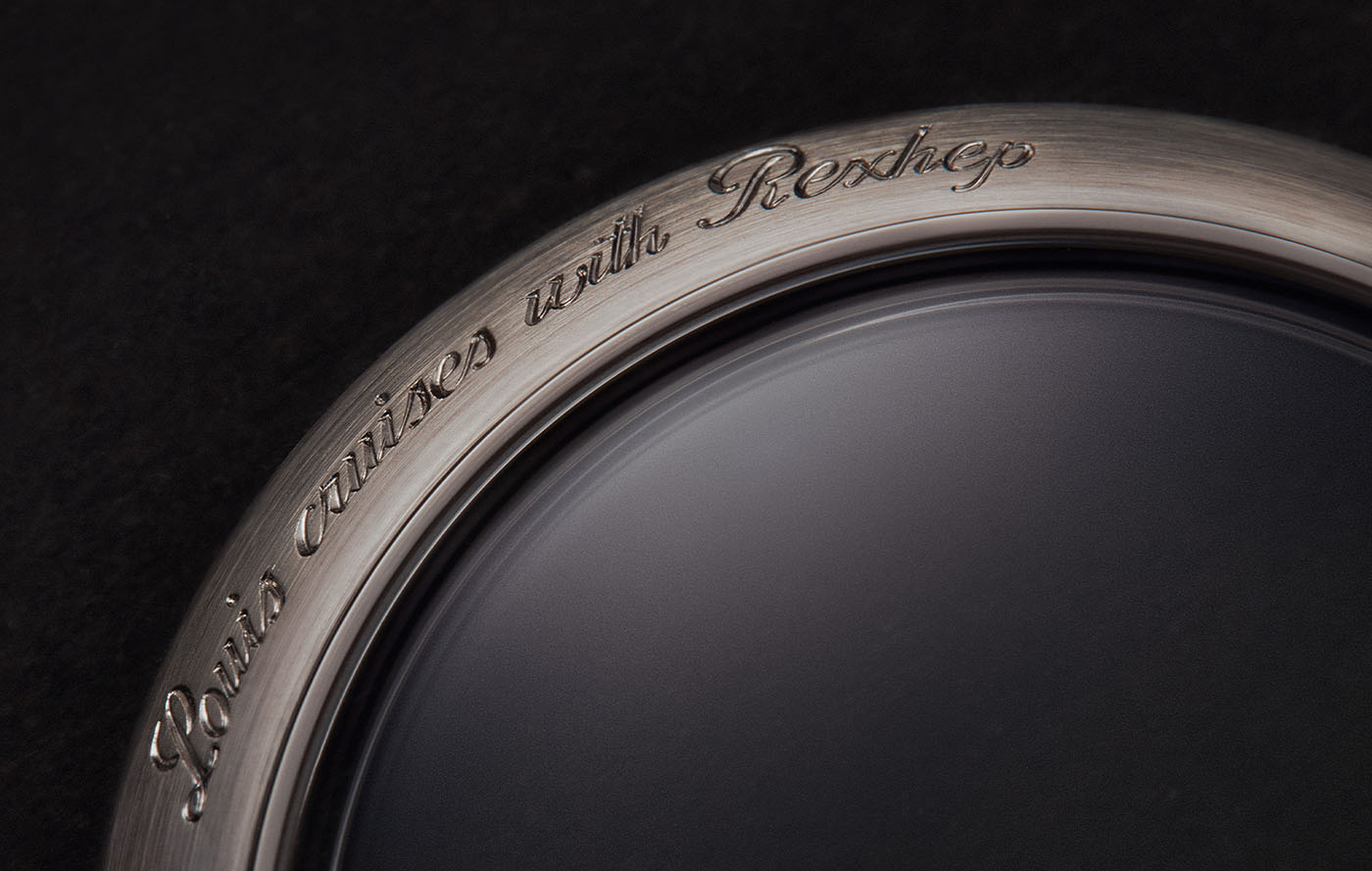 ‘Louis cruises with Rexhep’ engraving on the caseback
‘Louis cruises with Rexhep’ engraving on the caseback
The design has an emotional connection with Rexhepi. The AK-01, the first watch that Rexhepi ever worked on at Atelier Akrivia, was a chronograph tourbillon, and the first Louis Vuitton watch with a complication, the Tambour LV277, was also a chronograph; eventually Louis Vuitton’s first haute horology watch featured a tourbillon. The movement of the AK-01 was designed by Enrico Barbasini, Michel Navas, and Mathias Buttet of BNB Concept, a think tank and movement maker that Rexhepi was once a part of (interestingly, now Barbasini and Navas are master watchmakers with Louis Vuitton at La Fabrique du Temps).
Now, to make the movement unique and his own, Rexhepi has added a sonnerie to this movement to craft the LVRR-01 Chronographe à Sonnerie. “To the watchmakers who I worked with and learnt with, I wanted to show them something they could be proud of,” says Rexhepi. A limited edition of 10, it is priced at CHF 450,000 approximately.
Watchmaker Rexhep Rexhepi
Born in 1987 in the small village of Zheger in Kosovo, Rexhepi’s fascination with watches began with his father’s wristwatch, which he would open up and dig into. In 1998, he permanently moved to Geneva with his father to escape the war in Kosovo, and being in the hub of watchmaking proved fortuitous. “You have a lot of time, don’t have friends; you’re trying to find your passion. And you read about it [watchmaking]. I was quickly fascinated by it and realised I loved it,” Rexhepi says about his early days in Geneva.
What followed was a quick rise in the field of watchmaking. Rexhepi started his apprenticeship at Patek Philippe when he was 15, and was eventually hired by the prestigious maison. After five years there, he joined the aforementioned BNB Concept—Rexhepi started managing the company just after a year of working there, and went on to create complications for many recognised watch brands. He then joined F.P. Journe, where he was responsible for assembling their highly complicated movements. In 2012, he founded Akrivia, something he had dreamt of since his watchmaking days at Patek Philippe.
At Akrivia, Rexhepi wanted to keep things simple, working with traditional watchmaking where, everything from movements to decorations, was done more by hand and less with tools. “We are a little more than 20 people doing around 50 watches [a year],” says Rexhepi. “I have some suppliers for a few components, but my goal is to become totally independent.”
So, who is the Akrivia customer? Rexhepi defines his brand as authentic, aesthetic, artisanal, passionate, wanting to innovate, and having respect for history. “It’s important that people understand what we are doing and what we are trying to do. So having a customer who is open to learning, open to seeing that we are artisanal, is important.” He does not want to do watches because it is a trend, but instead wants to create something that he can be remembered for in the long run. “I am not sure if I will achieve it or not, but this is my dream, my motivation, and I want to work hard for this.”
Images: Courtesy Brand
This story first appeared in the WatchTime India's Sports Special Issue 2023.
